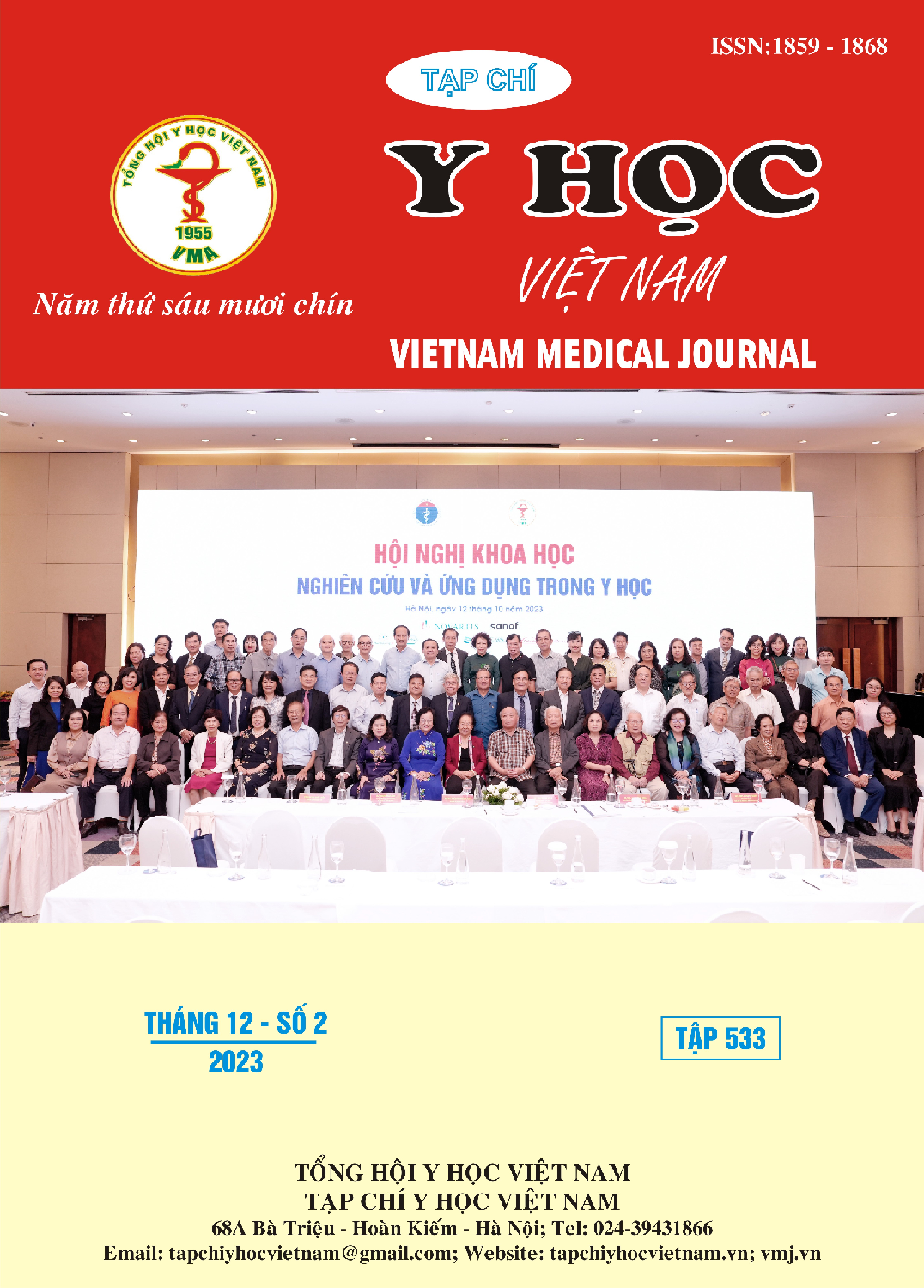ĐẶC ĐIỂM LÂM SÀNG, CẮT LỚP VI TÍNH Ở BỆNH NHÂN NHỒI MÁU NÃO DIỆN RỘNG DO TẮC ĐỘNG MẠCH NÃO GIỮA TẠI BỆNH VIỆN QUÂN Y 103
Nội dung chính của bài viết
Tóm tắt
Mục tiêu: Mô tả đặc điểm lâm sàng và hình ảnh cắt lớp vi tính ở bệnh nhân nhồi máu não diện rộng do tắc động mạch não giữa tại bệnh viện Quân Y 103. Đối tượng và phương pháp: nghiên cứu mô lâm sàng trên 32 bệnh nhân nhồi máu não diện rộng do tắc động mạch não giữa tại bệnh viện Quân Y 103 từ 1 năm 2017 đến tháng 9 năm 2022. Đánh giá đặc điểm lâm sàng và hình ảnh trên phim cắt lớp vi tính. Kết quả: Đặc điểm lâm sàng theo thang điểm NIHSS cho thấy đa số bệnh nhân ở mức độ trung bình và nặng (NIHSS ≥ 16), chiếm 84,4%; tình trạng tri giác trong phạm vị 6-12 điểm Glasgow (96,9%); triệu chứng lâm sàng thường gặp chính bao gồm liệt nửa người (100%), nói khó (90,6%), giãn đồng tử cùng bên (78,1%); Hình ảnh cắt lớp vi tính sọ não cho thấy diện nhồi máu rộng vùng cấp máu của động mạch não giữa 0 – 3 điểm theo thang điểm ASPECTS (78,1%). Kết luận: Bệnh nhân nhồi máu não diện rộng do tắc động mạch não giữa có triệu chứng chính là liệt nửa người, nói khó, giãn đồng tử cùng bên với tình trạng lâm sàng ở mức trung bình và nặng là chủ yếu, hình ảnh cắt lớp vi tính cho thấy diện tích vùng nhồi máu rộng.
Chi tiết bài viết
Tài liệu tham khảo
2. S. Das, p. Mitchell, n. Ross, et al. (2019). Decompressive hemicraniectomy in the treatment of malignant middle cerebral artery infarction: a meta-analysis. World neurosurg, 123: 8-16.
3. Eric jüttler, andreas unterberg, johannes woitzik, et al. (2014). Hemicraniectomy in older patients with extensive middle-cerebral-artery stroke370(12): 1091-1100.
4. E. Jüttler, s. Schwab, p. Schmiedek, et al. (2007). Decompressive surgery for the treatment of malignant infarction of the middle cerebral artery (destiny): a randomized, controlled trial. Stroke, 38(9): 2518-2525.
5. B. Daou, a. P. Kent, m. Montano, et al. (2016). Decompressive hemicraniectomy: predictors of functional outcome in patients with ischemic stroke. J neurosurg, 124(6): 1773-9.
6. Ogilvy cs carter bs, candia gj, et al (1997). One year outcome after decompressive surgery for nondominaut hemispheric infarction. Neurosurgery 40 : 1168 – 1176.
7. Brossaus wc delashaw jb, kassell nf, et al (1990). Treatment of right hemispheric cerebral infarction by hemicraniectomy stroke. 21: 874 – 881.
8. Manish singh sharma amadeep kumar, et al (2013). Outcome after decompressive craniectomy in patient with dominant middle cerebral artery infarction: a preliminary report. Ann indian acad neurol. Oct-dec; 16(4): 509-515.
9. Giuseppe l desiree jl (2000). Decompressive craniectomy for space occupying supratentorial infarct: rational, indication and outcome. Neurosurg focus 8(5).
10. S. B. Jeon, s. U. Kwon, j. C. Park, et al. (2016). Reduction of midline shift following decompressive hemicraniectomy for malignant middle cerebral artery infarction. J stroke, 18(3): 328-336.


